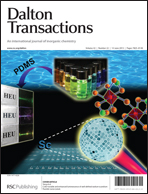A series of methanofullerene-o-carborane dyads (PCB-Ph-CB, PCB-Cnn-CB, n = 1, 3, 6, 11) were synthesized via esterification of [6,6]-phenyl-C61-butyric acid (PCBA) with 2-alcohol functionalized o-carborane derivatives, 1-(4-n-BuC6H4)-2-R-1,2-closo-C2B10H10 (R = p-C6H4OH, (CH2)nOH, n = 1, 3, 6, 11). All the dyads are highly soluble in chlorinated and aromatic solvents under ambient conditions. UV–vis absorption and electrochemical reduction of the dyads exhibited features almost identical to each other, as well as to their parent PCBM, suggesting that the electronic properties of the dyads would be dominated by the methanofullerene moiety. Solution-processed field-effect transistors (FETs) incorporating the methanofullerene-o-carborane dyads as active layer materials were fabricated and tested. AFM images of all the thin films showed a homogeneous morphology with RMS values of 0.184–0.212 nm. The transport data are shown to be typical of n-channel FETs. Among the devices, the PCB-C1-CB FET showed the best performance, with an electron mobility of 1.72 × 10−2 cm2 V−1 s−1, which is similar to that of PCBM. While the device performances gradually decreased with increasing length of the alkyl linker, they are superior to that (6.83 × 10−4 cm2 V−1 s−1) of the physical blend of o-carborane and PCBM.


 Please wait while we load your content...
Please wait while we load your content...